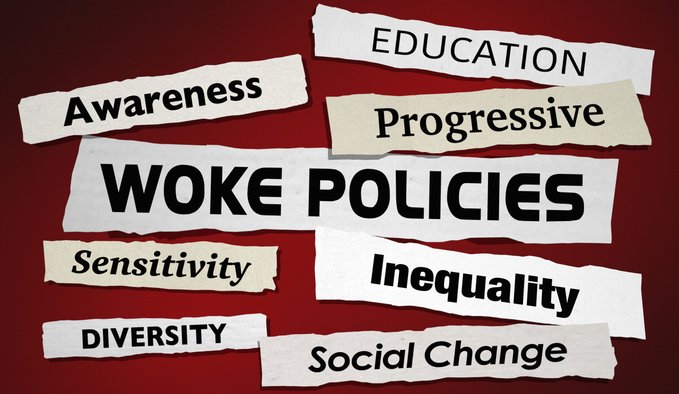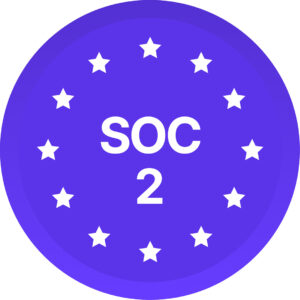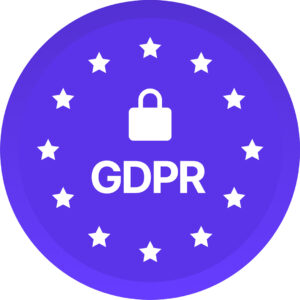Ensuring consistent data is foundational for driving meaningful progress within Diversity, Equity, and Inclusion (DEI) initiatives. It lays the groundwork for fostering truly inclusive environments and catalyzing positive organizational change. However, achieving data consistency presents unique challenges. Leaders must grapple with integrating diverse data sources, ensuring accuracy, and overcoming technical hurdles to make DEI programs effective. Navigating these obstacles requires strategic planning and leveraging advanced tools designed to streamline data collection, analysis, and implementation.
Impact of Data Inconsistency on DEI Goals
Inconsistent DEI data can undermine an organization’s efforts to cultivate an equitable and inclusive culture, leading to severe financial, operational, cultural, and social consequences.
Financial and Operational Consequences
Data inconsistencies directly impact an organization’s bottom line and operational efficiency. Without reliable data, organizations may misallocate resources, resulting in wasted investments in ineffective DEI initiatives. For example, if data on employee demographics or retention rates is inaccurate or incomplete, HR teams cannot develop targeted recruitment and retention strategies. This can lead to increased turnover rates, talent loss, and disrupted workflows, ultimately hindering productivity and profitability.
Cultural and Social Implications
Beyond financial repercussions, data inconsistency also carries profound cultural and social implications within the workplace. Inaccurate or incomplete data undermines efforts to cultivate an authentic culture of inclusion and belonging. When organizational data fails to accurately represent workforce diversity or the experiences of marginalized groups, it perpetuates systemic issues and disparities.
This lack of transparency erodes employee trust and diminishes morale, impeding progress toward achieving DEI goals. If employees perceive their experiences and perspectives are not accurately captured, they may feel undervalued and marginalized. Consequently, engagement decreases, turnover increases, and the work environment becomes less inclusive, creating a cyclical challenge for organizations striving to improve DEI.
Tackling integration and customization barriers
Survey customization challenges
Inflexible or generic DEI survey templates often fail to capture the nuanced experiences of diverse employee groups. Customizable survey tools are essential for accurate data collection, allowing organizations to tailor questions to address specific DEI concerns and gather relevant insights. Without the ability to customize surveys, organizations risk collecting incomplete or irrelevant data, undermining their DEI efforts.
Implementation and integration hurdles
Integrating new DEI solutions with existing systems presents complexities related to data flow and system compatibility. Without seamless integration, organizations may encounter disruptions in data collection and analysis, leading to inconsistencies in reporting and decision-making. Overcoming these hurdles requires careful planning and collaboration between DEI practitioners and IT departments.
How should DEI champions and IT departments collaborate?
- Establish clear communication channels: Effective collaboration begins with establishing clear communication channels. Regular meetings scheduled at key milestones throughout the integration process allow both teams to discuss progress, address challenges, and align on project goals and timelines. Additionally, utilizing collaboration tools, shared document repositories, and messaging platforms can facilitate real-time communication and document sharing between DEI practitioners and IT professionals.
- Define roles and responsibilities: Clearly defining roles and responsibilities is crucial for a successful integration process. DEI practitioners should provide insights into specific data requirements and desired outcomes, while IT professionals offer technical expertise on system compatibility and data integration protocols. By understanding each team’s responsibilities, organizations can leverage their collective knowledge and expertise.
- Conduct impact assessments:Before implementing new DEI solutions, organizations should conduct thorough impact assessments to identify potential risks and dependencies. DEI practitioners and IT specialists should work together to assess how the integration may affect existing systems, workflows, and data processes. This proactive approach enables organizations to mitigate potential issues and plan for a smoother transition
- Test and iterate: Collaboration on testing protocols is essential to ensure the successful integration of DEI solutions. Comprehensive testing can identify any issues or discrepancies in data flow and system performance. Based on feedback and testing results, organizations should iterate on the integration process to achieve optimal outcomes. This iterative approach allows for continuous improvement and ensures a seamless transition to new DEI tools and processes.
The Role of Advanced DEI Tools in Ensuring Data Consistency
Benefits of AI-powered DEI solutions
Diversio’s AI-powered DEI solutions offer tailored approaches to address specific data consistency challenges, providing actionable insights and driving meaningful change.
By leveraging advanced algorithms, organizations can identify areas for improvement and implement targeted strategies to foster diversity, equity, and inclusion. AI-driven tools enable a granular understanding of an organization’s DEI landscape, effective tracking for sustained progress, and access to real-time data and analytics.
Granular understanding
AI-powered solutions can help organizations identify patterns and trends within their DEI data that may not be immediately apparent through manual analysis. These tools analyze employee survey responses, performance evaluations, demographic data, and other relevant information to pinpoint areas where disparities exist in representation, advancement opportunities, or workplace experiences.
With this granular understanding, organizations can implement targeted interventions to address identified areas of improvement. For instance, if the data reveals disparities in promotion rates between different demographic groups, organizations can develop tailored mentorship or leadership development programs to provide support and opportunities for underrepresented employees. This targeted approach ensures that DEI initiatives are data-driven and address specific challenges within the organization.
Effective tracking for sustained progress
Moreover, Diversio’s AI-driven tools enable organizations to track the effectiveness of their interventions over time. By continuously monitoring key metrics and indicators, organizations can assess the impact of their DEI initiatives and make data-driven adjustments as needed. This iterative approach allows organizations to drive sustained progress toward their diversity, equity, and inclusion goals, rather than implementing one-time initiatives with no long-term tracking or accountability.
Overall, AI-powered DEI solutions empower organizations to move beyond surface-level diversity initiatives and implement targeted strategies that drive meaningful and lasting change. By leveraging advanced technologies, organizations can ensure data consistency, identify areas for improvement, and continuously monitor progress, enabling a more strategic and effective approach to DEI.
Real-time data and analytics
Access to real-time, comprehensive DEI data is essential for dynamic and strategic decision-making. Diversio’s analytics platform enables organizations to track progress, monitor trends, and make informed decisions in real-time. By having access to up-to-date data, organizations can adapt their DEI strategies to meet evolving needs and objectives, ensuring their efforts remain relevant and impactful.
Visualize and investigate
Diversio’s analytics platform goes beyond traditional reporting by offering customizable dashboards and interactive data visualization tools. This enables leaders to gain deeper insights into their organization’s DEI initiatives and understand the impact of their actions in real-time. For example, leaders can track key metrics such as employee engagement scores, representation rates, and diversity in hiring to assess the effectiveness of their DEI efforts over time.
If the data reveals a sudden decline in employee satisfaction among a particular demographic group, organizations can promptly investigate the underlying causes and implement targeted interventions to address the issue. Interactive visualizations allow leaders to drill down into specific data points, identify potential root causes, and make data-driven decisions to course-correct their DEI strategies.
Staying agile
Real-time analytics enable organizations to stay agile and responsive in their DEI strategies. As the business landscape evolves and new challenges arise, organizations can quickly adapt their approach based on real-time insights and emerging trends. This proactive approach ensures that organizations remain ahead of the curve in their DEI efforts and can effectively navigate changes in the external environment, such as shifts in workforce demographics, emerging social movements, or new regulatory requirements.
By leveraging Diversio’s real-time analytics capabilities, organizations can continuously monitor the effectiveness of their DEI initiatives and make informed adjustments as needed. This data-driven approach empowers organizations to be proactive rather than reactive, fostering a culture of continuous improvement and ensuring their DEI efforts remain relevant and impactful over time.
Common Misconceptions About DEI Data Management
Diversity, Equity, and Inclusion initiatives are often misunderstood, leading to misconceptions that can hinder an organization’s ability to foster a truly inclusive environment and reap the benefits of a diverse workforce. Two common misconceptions are perceiving DEI as a mere compliance task and underestimating the value of DEI surveys in driving meaningful change.
DEI as a compliance task
Contrary to common misconceptions, DEI is not merely a compliance task but a strategic imperative for organizational success. Many organizations view DEI solely through a compliance lens, treating it as a box to check rather than a catalyst for positive change. However, by integrating DEI into core business objectives and leveraging data-driven insights, organizations can create inclusive cultures that drive innovation and foster employee engagement.
When approached strategically, DEI initiatives unlock new perspectives by fostering a culture where diverse voices are heard and valued. This diversity of thought leads to more innovative solutions, as employees from different backgrounds bring unique insights and experiences to the table. Additionally, diverse teams are better equipped to understand and serve diverse customer bases, leading to improved product development and market competitiveness.
By reframing DEI as a strategic imperative rather than a checkbox exercise, organizations can create environments where all employees feel valued, respected, and empowered to contribute their unique perspectives and talents. This not only enhances employee engagement and retention but also positions the organization for long-term success in an increasingly diverse and competitive marketplace.
DEI surveys are ineffective in driving meaningful change
Another common misconception is that DEI surveys are ineffective in driving meaningful change within an organization. Some may perceive these surveys as mere formalities rather than powerful instruments for organizational improvement. However, when designed effectively and implemented with a genuine commitment to change, DEI surveys serve as invaluable tools for gathering comprehensive data on employee experiences and perceptions related to diversity, equity, and inclusion.
Customizable and frequent DEI surveys offer organizations the opportunity to delve into various aspects of the employee experience, uncovering disparities in opportunities for career advancement, professional development, and workplace experiences among different demographic groups. These surveys provide a platform for employees to voice their concerns, share their perspectives, and suggest improvements.
When employees see that their feedback is not only welcomed but also acted upon, they develop a sense of loyalty and commitment to the company. This active engagement in the feedback process strengthens employee morale, loyalty, and trust in leadership, ultimately contributing to improved performance and long-term organizational success.
Data-Driven Strategies for Overcoming Implementation Challenges
Integrating and implementing DEI solutions within existing organizational frameworks can pose significant hurdles, particularly concerning data flow and system compatibility. However, organizations can overcome these challenges by employing data-driven strategies tailored to their specific needs.
Customization for precision
One key strategy is to customize DEI solutions to align with the organization’s unique requirements. By analyzing existing data and identifying areas for improvement, organizations can tailor DEI surveys and tools to capture relevant insights effectively. This customization ensures that data collection efforts are precise and targeted, leading to more accurate and actionable results.
Pilot programs for seamless integration
Implementing DEI solutions in phases or through pilot programs allows organizations to test integration processes before full-scale deployment. By collecting feedback from users and stakeholders during pilot phases, organizations can identify potential integration challenges early on and address them proactively. This iterative approach minimizes disruptions in data collection and ensures seamless integration with existing systems.
Collaborative approach
Collaboration between DEI practitioners and IT departments is essential for successful implementation. By fostering open communication and collaboration, organizations can leverage the expertise of both teams to navigate technical challenges and ensure smooth integration. This collaborative approach ensures that DEI solutions align with organizational goals and IT infrastructure, maximizing their effectiveness in driving meaningful change.
Continuous monitoring and optimization
Once DEI solutions are implemented, continuous monitoring and optimization are crucial for maintaining data consistency and effectiveness. By regularly analyzing data and monitoring key performance indicators, organizations can identify areas for improvement and make data-driven adjustments to their DEI strategies. This proactive approach ensures that DEI initiatives remain aligned with organizational objectives and adapt to evolving needs over time.
Summary
Organizational leaders face significant challenges when data inconsistency undermines Diversity, Equity, and Inclusion (DEI) initiatives. Accurate and consistent DEI data is the foundation for making informed decisions that allocate resources effectively, enhance employee morale, and drive meaningful progress toward inclusivity goals. Without reliable data, organizations risk not only financial losses and operational inefficiencies but also the perpetuation of workplace inequities.
By dispelling common misconceptions about DEI data management and employing data-driven strategies, organizations can overcome implementation challenges and unlock the true potential of their DEI initiatives. Tools like Diversio’s AI-driven solutions can address these critical issues by ensuring data accuracy through real-time analytics and customizable surveys tailored to capture the full spectrum of employee experiences.
Diversio’s platform provides a seamless integration with existing systems, offering leaders a comprehensive overview of their DEI landscape. This empowers organizations to implement targeted and strategic actions that optimize DEI initiatives and transform them into a strategic advantage. Ultimately, this approach fosters a culture that is genuinely inclusive and dynamically responsive to the needs of a diverse workforce, positioning the organization for long-term success in an increasingly diverse and competitive market.













